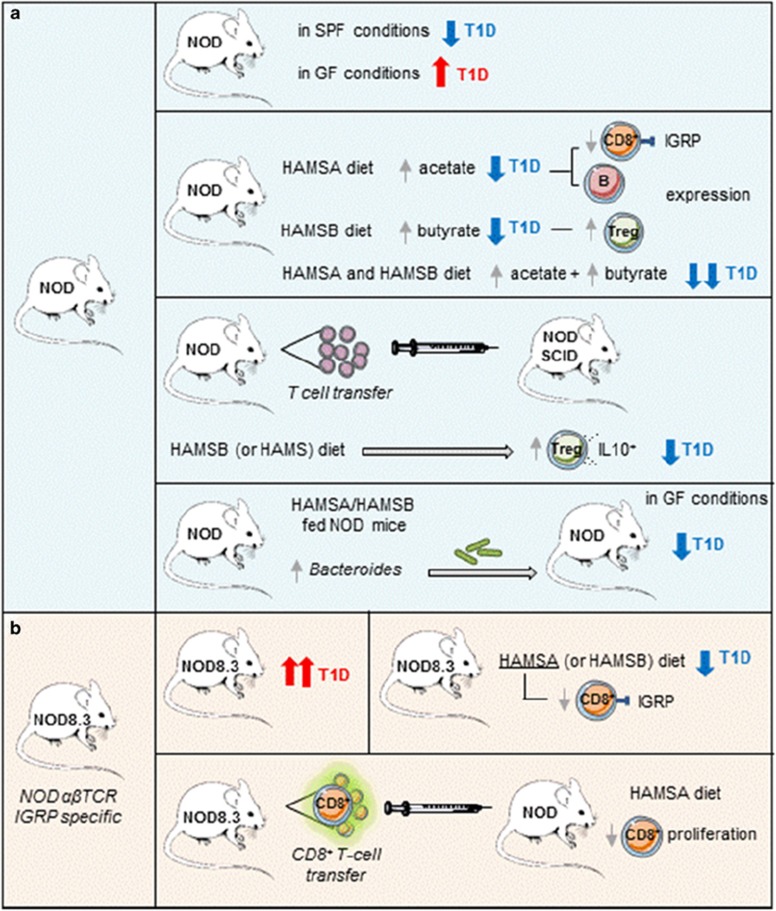Figure 1.
Main experimental approach revealing the specific mechanisms of acetate and butyrate protection in T1D development. (a) NOD mice undergo exacerbated T1D in germ-free (GF) conditions. Oral administration of acetylated high-amylose maize starch (HAMSA) or butyrylated high-amylose maize starch (HAMSB) increased acetate or butyrate concentrations, respectively, which protected NOD mice from T1D development via independent mechanisms. Whereas HAMSA administration reduced specific IGRP (islet-specific antigen glucose-6-phospatase catalytic subunit-related protein) reactive CD8+ T-cells and induced a reduction in MHC-I and CD86 expression, HAMSB increased the Treg cell population. Splenic T-cells from NOD mice that were orally treated with HAMSB, when transferred into immunodeficient NOD-SCID mice, reduced T1D severity in receptor NOD-SCID mice. Fecal transplant of gut microbiota from NOD mice fed the HAMSA/HAMSB diet into GF NOD mice transferred diabetes protection. (b) NOD mice that express a transgene encoding the αβ TCR derived from a CD8+ T-cell clone specific against IGRP (NOD8.3) undergo acute T1D. The HAMSA diet inhibits the specific proliferation of IGRP reactive CD8+ T-cells NOD8.3 and, ultimately, T1D progression.

